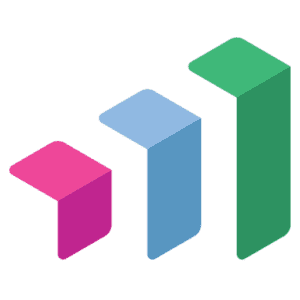Duration-Based Pricing FTW!
How should digital services companies price when humans are terrible at estimating time? It’s tricky when your product is your people.
Regardless of whether you quote client work with hourly rates, project fees, or retainers, it comes down to estimating how much time it will take your employees to deliver the scoped work. (Even when you price based on value, you still factor in how much time it’ll take your team to deliver it.) This gets complicated, given us humans are pretty terrible at estimating time. 😬

Alas, digital services companies still need to estimate how much time a project will take to set their price and allocate resources. They typically choose between two methods:
Task-based pricing: With task-based pricing, companies meticulously break down each project into a series of tasks and subtasks. They estimate how much time it will take their people to complete each task, and they assign a fee to each task based on the billable rate of the person assigned to it — or the billable rate for that particular task. To determine the project budget, they simply add up the cost of the various tasks.
Duration-based pricing: Duration-based pricing assigns a certain percentage of each role or a person’s time to client projects; we generally recommend increments of 25%, 50%, 75%, or 100%. For example, rather than telling an employee to spend a certain amount of time on each task (1.5 hours for task A, 3 hours for task B, 30 minutes for task C), duration-based pricing assumes the employee will spend, say, 50% of their time on a project for client A and 50% on client B. The expectation is that the employee will complete all tasks they’re responsible for during that time — and communicate with their manager or project owner if it’s not enough time to finish everything.
Some services companies argue that task-based pricing is necessary. They say it helps them look back retroactively to see where, exactly, their estimates were off once the project is complete. Then they can use those findings and apply them to future proposals.
But let’s get real.
How often do services companies actually run reports to compare their estimates to reality? If they do complete an analysis, how do they account for the extra time it took to break apart the project into tasks and for employees to request additional time to complete them? In truth, it’s rare to account for the extra time and inefficiencies that come with task-based pricing. The more mature your company becomes, the less task-oriented it should also become. Duration-based pricing is a more efficient model that empowers employees and keeps everyone focused and on track.
Place the focus on output — not hours.
In many ways, duration-based pricing aligns better with how development teams plan and track their work, particularly when using “velocity” in Agile. Velocity measures how much effort it requires to complete a project or user story in a given time frame. For example, many companies (including Parallax) use a points system to score the effort it will take to complete a piece of work. The more complex the work, the higher the points. Points abstract from hours because some employees might complete more points in an 8-hour day than others. Plus, hours don’t really matter; the output is what matters.
The logic behind duration-based pricing is the same. We shouldn’t tell employees how much time to spend on every single task because we’re pretty bad at estimating time in these small increments. Plus, we’re human; we’re not machines that complete projects by methodically checking off one task after another. We see projects as high-level problems to solve, and we solve them creatively using our unique skills. Breaking down projects into tasks puts unnecessary (and potentially harmful!) constraints on employees — encouraging them to focus on time instead of quality. This focus on hours prioritizes and rewards the wrong behaviors.
Duration-based pricing gives your employees a chunk of time to complete a set of tasks and entrusts them to allocate their time in a way that delivers the best output possible. This approach also:
1. Treats your employees like the talented adults you hired.
Your company’s success depends on the talent of your people. Your ability to hire and retain the best talent depends on your people having space and freedom to realize their full potential. Duration-based pricing empowers your people to manage their time and communicate with their managers or project leads when time estimates don’t match. You give employees autonomy instead of micromanaging by telling them exactly how many hours and minutes you expect them to spend on each task. Research shows that employees who have higher autonomy levels enjoy a greater sense of job satisfaction and well-being. When employees are happy and feel valued, they’re more productive. They feel trusted to get the job done because you give them a challenge and the time to solve it. It’s a win for you and a win for them.
2. Encourages more efficient operations.
Task-based pricing requires tedious manual work. Project managers spend time breaking down each project into many small subtasks and assigning how much time they think they should allocate to each one. Once they finish the admin work, they connect with each employee to share exactly how much time they should spend on each assigned task.
If any time estimates are off, it requires back and forth between the employees and the project managers to correct them. This is such a waste of time! Plus, you bog down your talented project managers with the wrong things — busy work instead of initiatives that leverage their skills to support the agency.
It’s far more efficient to approach the project from a higher level by telling employees, “You’re resourced to work X% of your time on this project. You’re expected to get all of these tasks done during that time. If that feels off to you, come talk to us.” Rather than adjusting estimates for each task, you adjust one large bucket of time.
3. Increases utilization across teams.
Task-based pricing also creates a lot of room for inefficiency across project teams. Typically, the more subtasks you have within a project, the more people you have jumping in and out of the project. This causes project teams to become large and frustratingly inefficient. Plus, the more you divvy up projects into microtasks, the more your employees have to jump between different projects and tasks. Every time an employee finishes one small task, they have to figure out which project to work on next, do some digging to determine where they left off on that project, and then begin their next small task. The time required to “get up to speed” is called context switching, and it eats up productivity and utilization because employees waste time (and mental energy!) switching between projects.

Digital services companies that use duration-based pricing have higher utilization because employees waste less time on context switching. They’re more focused on delivering great results for one or two clients, which benefits the employee, business, and client.
4. Makes pricing more accurate.
Many argue that task-based pricing enables them to charge less and win more deals. There’s truth to this; when you price projects on a task-by-task basis, you often come up with a less expensive bid that’s easier to sell. It’s human nature to want to remove as many barriers to close a deal, including avoiding sticker shock!
But the reality is that task-based pricing is less accurate. It doesn’t account (or bill) for the time required to plan and allocate resources to tasks — or for the time eaten up by context switching. This can lead to bad habits and underperformance.
For a project priced on time and materials, employees might not track hours accurately enough to keep you from blowing your budget. And even if they do track accurately, you could still blow your budget and either disappoint the client or take profit loss. For fixed-bid projects, you likely don’t realize the margin you think you should.
Duration-based pricing makes your proposals more realistic. Employees switch between fewer projects (less context switching), and there is less tedious work to plan and manage. Duration pricing also helps you avoid becoming a commodity. Determine what value or outcome you aim to bring the client and think about how you deliver it. Duration pricing helps you get there.
You’ll never protect your value as an organization if you win work by merely being the cheaper option.
5. Repositions how everyone thinks about timesheets.
Oof, timesheets are the worst! True. But so was eating your vegetables as a kid. Now you know better, and you might even like broccoli now and then. 😏 Timesheets, like broccoli, can be contentious. Employees often get a Big Brother vibe from them, feeling like their employer is watching how they spend every minute of every day. Leaders get frustrated that employees don’t understand why they’re important and never complete them on time. You can ease much of this with duration-based pricing.
The Big Brother feeling employees get doesn’t come from the timesheets themselves; it comes from the feeling that you don’t trust your employees to manage their time and put the effort in the right places. With duration-based pricing, your employees understand the high-level expectations of where they should spend their time. Then, they decide how they spend each hour to deliver the best output.
As an added bonus, it’s also easier for employees to complete timesheets with duration-based pricing. If they’re supposed to spend 25% of their time on one project, they know that’s 10 hours a week. Simple math. Plus, your customers aren’t expecting crazy detailed invoices down to 15-minute increments if you use duration to price your proposal. (If they do expect this, maybe you should consider whether you’re delivering valuable work — or a commodity.)
How Parallax supports duration-based pricing.
Our experience at digital services companies has made us pretty passionate about the use of duration-based pricing over task-based approaches. While Parallax supports various pricing and agency resource management methods, our software works especially well with duration-based pricing. The resource planning feature allows you to assign a percentage of each employee’s time to a project, making it easy to visualize resource allocation.
Sophisticated digital agencies use insights gleaned from projects to inform how they estimate time and price future projects. Then, they build standardized service offerings based on the work they deliver best. Parallax helps you standardize your service offerings with our customer-favorite “shapes” tool. You can use the tool to quickly spin up projects based on common patterns from your most repeatable services. This helps your sales team price consistently and apply duration-based thinking across your entire client portfolio.
Are you ready to put task-based pricing behind you and empower your employees to do their best work? Let’s connect to discuss how Parallax can align your business’s ambitions with the ambitions of your people.


